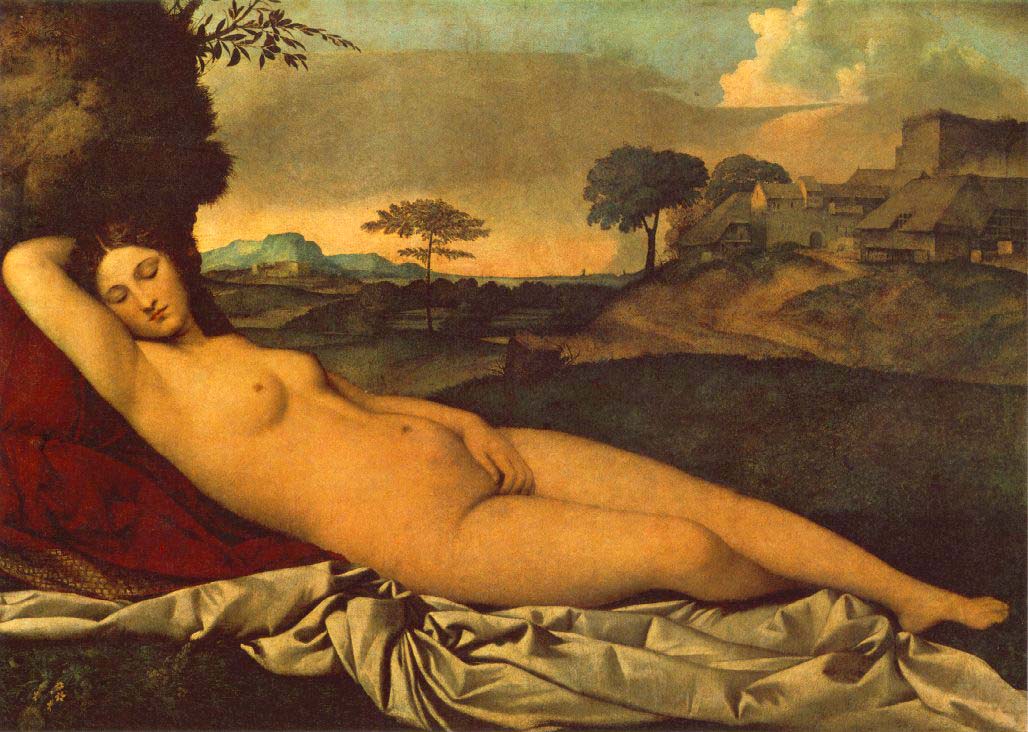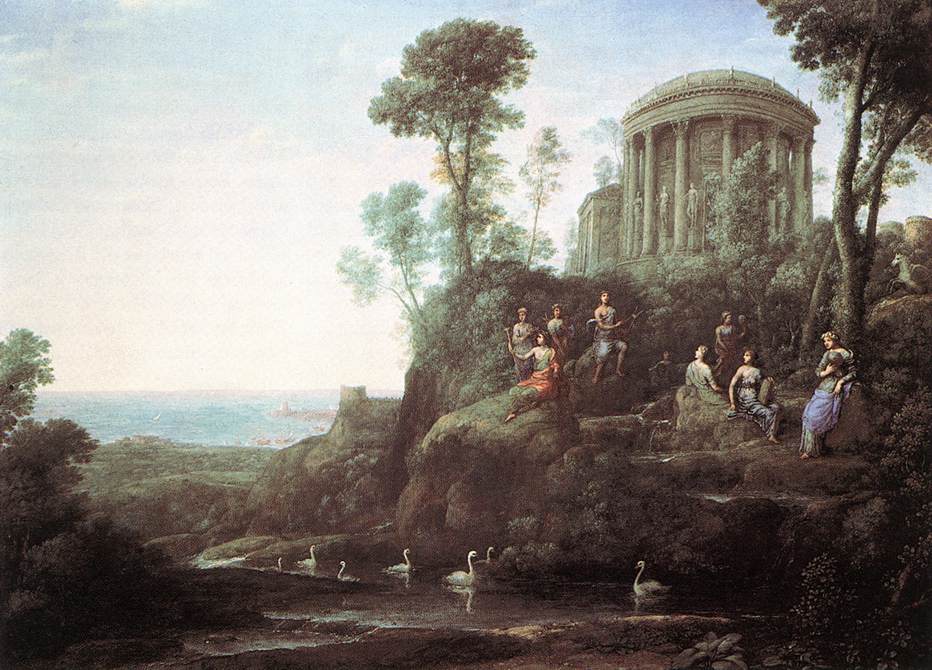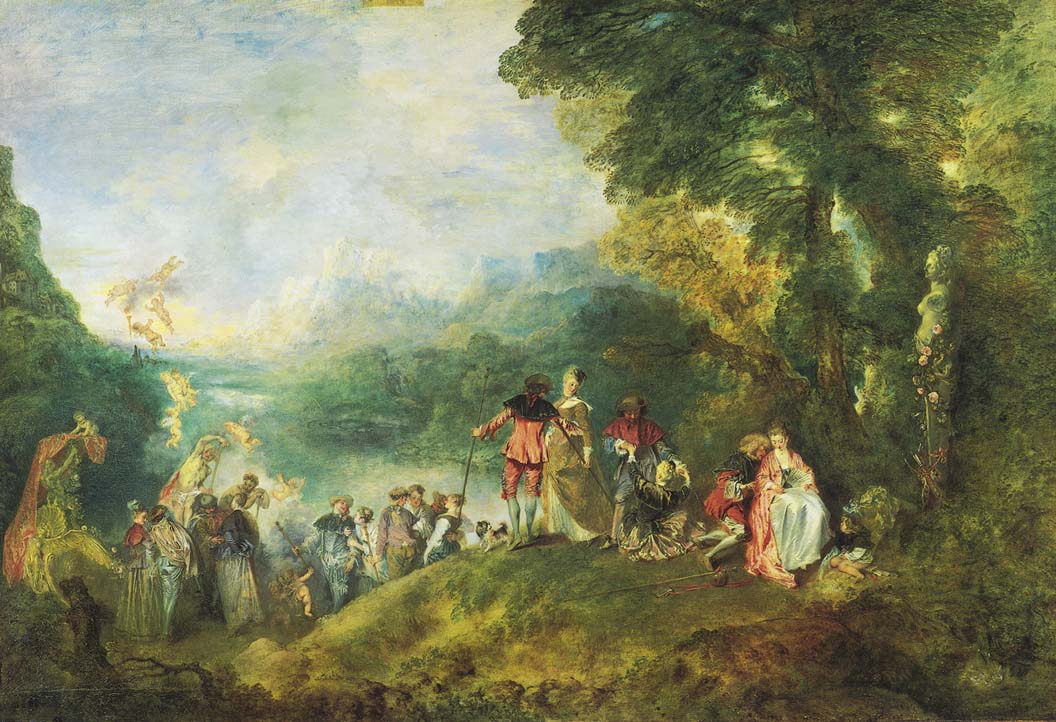Rumble Pie #9
Clover the Hills and Far Away
"LOOK INTO CLOVER LAWNS." I like it that I'm not the only one raising eco-initiatives at Green Apple. Victor is Lead Hand out in the field, and I'm pushing pixels back at the office, so he handed me the brief: Why the hay are we putting down hardly anything except for green grass? It turns out that, despite their nomenclature, of the two species of grasses that we use with our clients -- Kentucky Bluegrass and Sheep's Fescue -- neither of them are native to North America. So why do we keep using them time and time again, by default? For that matter, why are ninety-nine per cent of the people on this continent carpeting their properties with identical kinds of turf, without question? To find out the answer, I decided to do some serious research into the history of horticulture.
OUR INQUIRY INTO the legacy of landscaping begins in Venezia. Today, Venice is a small city in northern Italy that is world-famous for piazzas, canals, gondolas, and, uh, blinds. New York Times writer Luigi Barzini called it "undoubtedly the most beautiful city built by man" (although being Italian himself, he was slightly biased). But back in the day, Venice was an independent city-state; at the end of the Middle Ages and the beginning of the Renaissance, Venice was also the most moneyed city in all of Europe. The navies of Venice protected the richest merchants on the Mediterranean, and the exploits of its native son Marco Polo confirmed its important role as gateway to the Eastern trade routes to Arabia, Persia, India and China.
BECAUSE VENICE WAS at the crossroads of international commerce, both overland and maritime, it was also a nexus for the exchange of information, and as a consequence, a chrysalis of culture. Textual and graphical art forms flourished in Venice: in the late 1400s, it was the printing capital of the world, and the painting capital, as well. Here they pioneered the paperback as a printing medium, and the canvas as a painting medium. At this time, the most affluent families of Venice competed with one another to financially support the most talented artists. One of these, a peer to Leonardo DaVinci, was Giorgio Barbarelli da Castelfranco, known colloquially as Giorgone (i.e. Big George). And Giorgione is most famous for rendering what is considered to be the very first "landscape" painting in the Western tradition: The Tempest.



GIORGIONE AND DOZENS of others that followed in the centuries to come, like Claude Lorraine and Jean-Antoine Watteau, painted in a style that would be called 'pastoral'. The hallmarks of this painting style are the idealization of the pastoral lifestyle of the past, of shepherds and their flocks, frolicking in the fields. By this point, the Roman Empire had been in decline for a millennium, and the Italian towns were replete with architectural ruins. So picturesque by pastoral standards meant lush landscapes of rolling hills and groves of trees reasserting themselves in the foreground, pushing architectural elements into the background. And since goats graze on grasses for food, reducing them to fibrous green carpets, the images included closely-cropped meadows as important components in the perfect picture.


IN THE NEXT CENTURY, Portuguese explorers managed to sail around the African continent and reach India and the Far East by themselves. This meant that Venice's capacity as a hub of commerce and culture tapered off. But the harkening back to romantic notions of our pre-agricultural past, as codified in the Venetian countryside, were permanently inscribed in the minds of artists on the continent. Two hundred years later, a group of English landscape designers would be inspired by these pastoral paintings, and invent a new style of estate garden that would lay the foundations for what would one day become the dominant paradigm for landscaping lawns in the British colonies and beyond.

|

